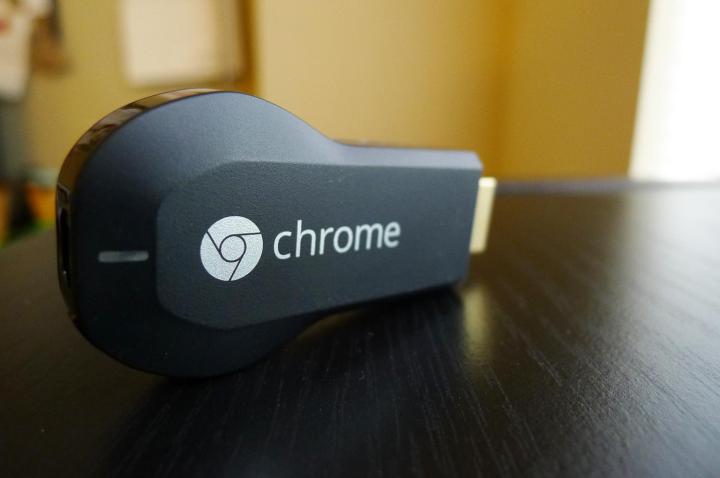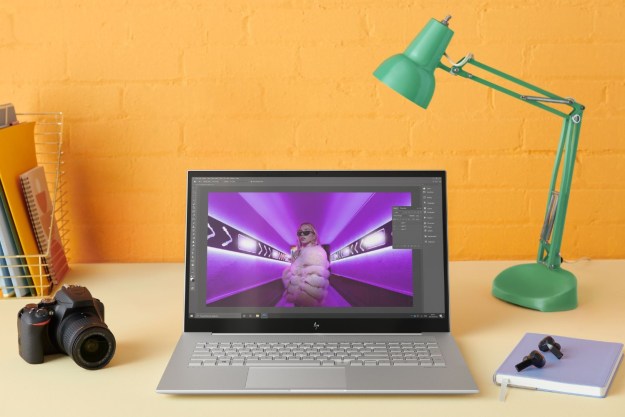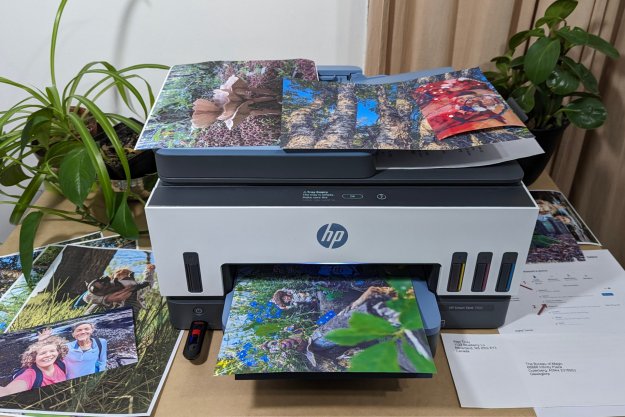
Late last month, Google stunned us all when it released the Chromecast HDMI dongle, a $35 streaming stick that’s capable of bringing Netflix, YouTube, and Google Play content to your HDTV, as well as the ability to mirror a Chrome browser tab on your television. I’ve already deemed it a viable replacement for my WD TV Live streaming box, but does the Chromecast have what it takes to replace the robustness of my home theater PC?
I have a custom-built HTPC sitting in my living room that is responsible for almost everything I watch on my TV (besides live television, for which I have a simple antenna to get basic channels). I mostly use it to watch Netflix shows, and any other movies and TV shows that I have stored locally on my NAS that sits in the home office. Of course, my HTPC is capable of much more, like playing games and even using it as a DVR. I hardly take advantage of those features, but they’re at least there if I ever want to use them.
However, it definitely wasn’t a cheap home theater option for me. I spent a little under $300 for it, using cheap components that wouldn’t necessarily be good for a main computer, but are good enough to use for basic multimedia tasks. It can play 1080p video without glitching or lagging behind, but I’m sure the internal components are in high gear whenever I pop in a Blu-ray movie.
Then the Chromecast came out. I knew right away that it could replace my WD TV Live streaming media box in my bedroom without a second thought, but it got me wondering whether it could replace my HTPC. The short answer is no, but I really wish it could. There are a few big, obvious sacrifices to be made if I switched to the Chromecast, namely the streaming limitations of the dongle, with support for only Netflix, YouTube, and Google Play content.

Chromecast woes
However, the Chromecast suffers from far more than just limited content when comparing it to HTPCs. For instance, the Chromecast can play locally-stored content, but it’s a bit tricky and hardly worth it. Google clearly sees it as a workaround for now, but it requires that local files be played through the Chrome Web browser by copying and pasting the file path into the address bar. From there, you can beam it to the Chromecast using the Google Cast Chrome extension. Yes, it works, but it’s certainly not as quick and easy as just double-clicking a video file and having it play in the media player of your choice. Plus, HTPCs can play any file type you throw at them with the right media players and codecs installed, although I was bit surprised that I was able to beam an .MKV file through the Chrome browser.
In general, the Netflix and YouTube streaming capabilities on the Chromecast are good, but one of my biggest gripes is that Netflix doesn’t automatically play the next episode in a TV series when using the Chromecast. That’s one thing I love about the Web interface: I can binge-watch a TV show without having to reach over and click to play the next episode every time. After a show stops playing on the Chromecast, the Netflix app goes back to the main screen. From there, the app will show what you recently watched at the top. Most users would think that tapping on the TV show you just watched would play the next episode, but it actually just repeats the same episode.
Instead, you have to navigate your way to the list of episodes for that show and select the next episode, making it extremely inconvenient to do any kind of binge watching (perhaps my eyes should thank Google?). I hope Netflix gets enough complaints that it’ll be obligated to fix this, but I’m not really holding my breath.

Help is on the way
Of course, the limitations of the Chromecast have already been a huge turn-off for prospective buyers, dashing any hopes of it being the ultimate streaming device for some. However, that’s quickly changing. Numerous other services have already chimed in with upcoming support for the Chromecast, including Hulu, HBO, Pandora, Vimeo, Redbox Instant, and more. Thanks to the Chromecast SDK that Google released, we should be seeing a healthy dose of streaming services make their way to the Chromecast soon.
Plus, Google has room to improve the Chromecast as a device itself. Many of the features are still in beta, including the Chrome browser mirroring, and it’s almost guaranteed that this will get better and better as time goes on. There’s also room to add more features to the device, including the possibility of mirroring your actual desktop, rather than having to rely on the Chrome browser. There’s also a Plex Chromecast app in the works that will be able to stream and handle local files on your network that are located either on your computer or a NAS – this could be huge.
We also can’t forget about the possibility of hacks to further extend the capabilities of the Chromecast, although that almost seems like a distant thought now, since Google recently (and rather quickly) patched up a hole that allowed hackers to root the device. This has us wondering whether Google is looking to keep the Chromecast platform a bit more closed off than Android, but it may just be a sign that Google isn’t quite ready for hackers to take a hold of the Chromecast just yet.

One of the biggest pluses of replacing my HTPC with a Chromecast is that it would allow me to make more room on the TV stand. The Chromecast is literally out-of-sight, and if I need to take it with me when I travel, I just yank it out of its HDMI port and throw it in my bag without any hassle, that way I can have Netflix in my hotel room or at a friend’s house whenever I want; it would be like having an HTPC with me wherever I go. Of course, there’s the required microUSB cable, but I always keep one of those in my bag anyway.
To Chromecast or not to Chromecast?
When it all comes down to it, I’m a very frugal and minimalistic person, so the Chromecast fits right into my wheelhouse. I would throw out my shoebox-sized HTPC in a heartbeat in favor of the Chromecast if it could offer close to the same functionality – but it doesn’t. It’s simply not meant to be an HTPC replacement and it never will be.
After attempting to exclusively use the Chromecast on my living room TV, it just left me missing my HTPC more and more. There are simply too many capabilities to count that an HTPC can do that the Chromecast can’t: play games, watch live TV, record live TV, play DVD/Blu-ray movies, store files, and not to mention access to a full desktop OS with a file system that you can easily navigate (the Chromecast relies on other devices for all of that, which can be cumbersome).
Even if the Chromecast had all these capabilities, the lack of an Ethernet port is huge; doing any kind of streaming wirelessly is a cause for trouble, unless you have an incredibly good Wi-Fi signal, which is next to impossible 99 percent of the time.
The Chromecast is an extremely promising piece of technology, but it just doesn’t have the bevy of features that it needs, which is really the only problem it faces right now. Of course, there’s also the streaming boxes like the Apple TV and Roku, which are also pretty inexpensive and robust; but $35 is unbeatable, and the Chromecast will keep getting better – hopefully to the point that it’s capable of performing just as well as, or even better than, an Apple TV or Roku. However, there’s just no way that it’ll ever perform as well as an HTPC.


